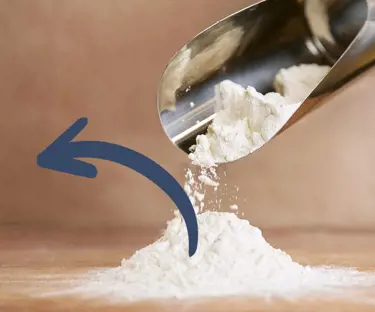Recently, New Nutrition Business published a report identifying some key nutrition and health trends that may help to shape the not-too-distant future of the food and beverage industry. Based on more than 500 interviews with senior executives in the food, beverages and ingredients industries, the popularity of protein as a reliable and trusted source of nutrition remains clear.
Why is protein so front-of-mind for consumers? One reason for this, which we explore in the report, is the ‘health halo’ effect.
Defining the health halo
A health halo is used to describe how some consumers are influenced by specific health claims on food product labels. A gluten-free claim, for example, has consumers thinking that the product is ‘better for you’, without further examining its ingredients.
Another example is olive oil. The considerable amount of media exposure on its health benefits has captured the attention of consumers globally. The health halo effect means that any food product containing olive oil is perceived as being healthier, and this becomes embedded in consumers’ minds.
Likewise, protein has developed its own health halo, and consumers are actively seeking it for this reason.
Protein reigns supreme
The benefits of consuming protein have been kicking around for years, so it’s no surprise that it ranks highly with those on a quest to become healthier. Whey protein, in particular, first gained popularity for enhancing performance in bodybuilders and elite athletes. More recently, whey protein’s health benefits have come to the attention of a much larger sector of consumers: less rigorous exercisers who are seeking foods to enhance their active lifestyles.
The report’s detailed analyses also identify other motivations to include more dietary protein. We know that protein supports ‘weight wellness’ by extending satiety for longer, hopefully displacing junk food from the diet. It also helps to build and preserve lean muscle mass, which is useful for elderly consumers wanting to slow the effects of sarcopenia.
Protein is also benefiting from consumers’ increasing concern about carbohydrates, as we mention in the report. Low-carb eating, as prescribed by the Atkins, keto and paleo diets, has gained mass following by health-conscious consumers. They monitor the amount of carbohydrates they consume, and they are careful to select the ‘right’ kind. Protein, in contrast, is increasingly finding favor in consumer perceptions as an important part of a healthy diet.
Being one with Mother Nature
Another trend we highlight is consumer curiosity about where their food comes from and a desire for more natural, ‘cleaner’ food. Many of these consumers commonly read and understand ingredient lists, which sets them apart from the ‘health halo’ customers. Food and beverage companies have responded to this drive for a cleaner label by featuring natural ingredients and minimising additives. Protein, as a natural ingredient, is an excellent fit for these consumers.
Although consumers desire all things natural, their demand for convenient products to serve their fast-paced lifestyles continues to grow. Consequently, the report recommends that the food and beverage industry should continuously innovate products to meet this desire.
We’ve come a long way
In the days before bodybuilders were downing their daily dose of whey protein, knowledge about the range of protein sources was limited. Many thought the best way to meet their daily protein requirement was to devour a big, juicy steak. But this is no longer the case.
Today, protein is presented in many creative formats. A meander through supermarket aisles reveals abundant innovation in protein product development. Lifestyle and consumer preferences continue to drive new products in a range of formats in a time where consumption moments have proliferated.
For example, in 2014, Oscar Mayer launched a product called 3P: Portable Protein Pack. This crowd-pleaser offers protein sources in the form of processed meat, nuts and cheese. Its label boasts clever nutrition claims, convenience and no artificial preservatives. Sales of the convenient snack that packs a protein punch catapulted from US$46 million in 2015 to US$130 million in 2018.
The 3P product meets two consumer priorities: convenience and natural ingredients. How can food and beverage innovators meet these priorities in their next creative innovation? An obvious step is to incorporate protein ingredients that aren’t highly processed. Whey protein, for example, provides an opportunity for bakers to meet consumer demands for healthier, all-natural and allergen-free options.
Filling knowledge gaps
There is plenty of scope to better inform consumers about the ‘naturalness’ and healthiness of food products. But this will not be an easy task. Let’s remember that people are bombarded with new information daily. Many source their information from influencer and wellness blogs, with perhaps the most convincing arguments, in their eyes, coming from anecdotal stories from “people like me”. Results from scientific studies are generally slower to filter through to consumers. We know there is room for industry to grow consumer awareness of the different protein types and their effects.
The New Nutrition Business report makes it clear that the future is bright for protein as a health-promoting ingredient. Industry can respond to consumer trends for health, close-to-nature and convenience by using ingredients that truly display these characteristics.
This blog contains material and information intended for B2B customers, suppliers and distributors, and is not intended as information to the final consumers.


